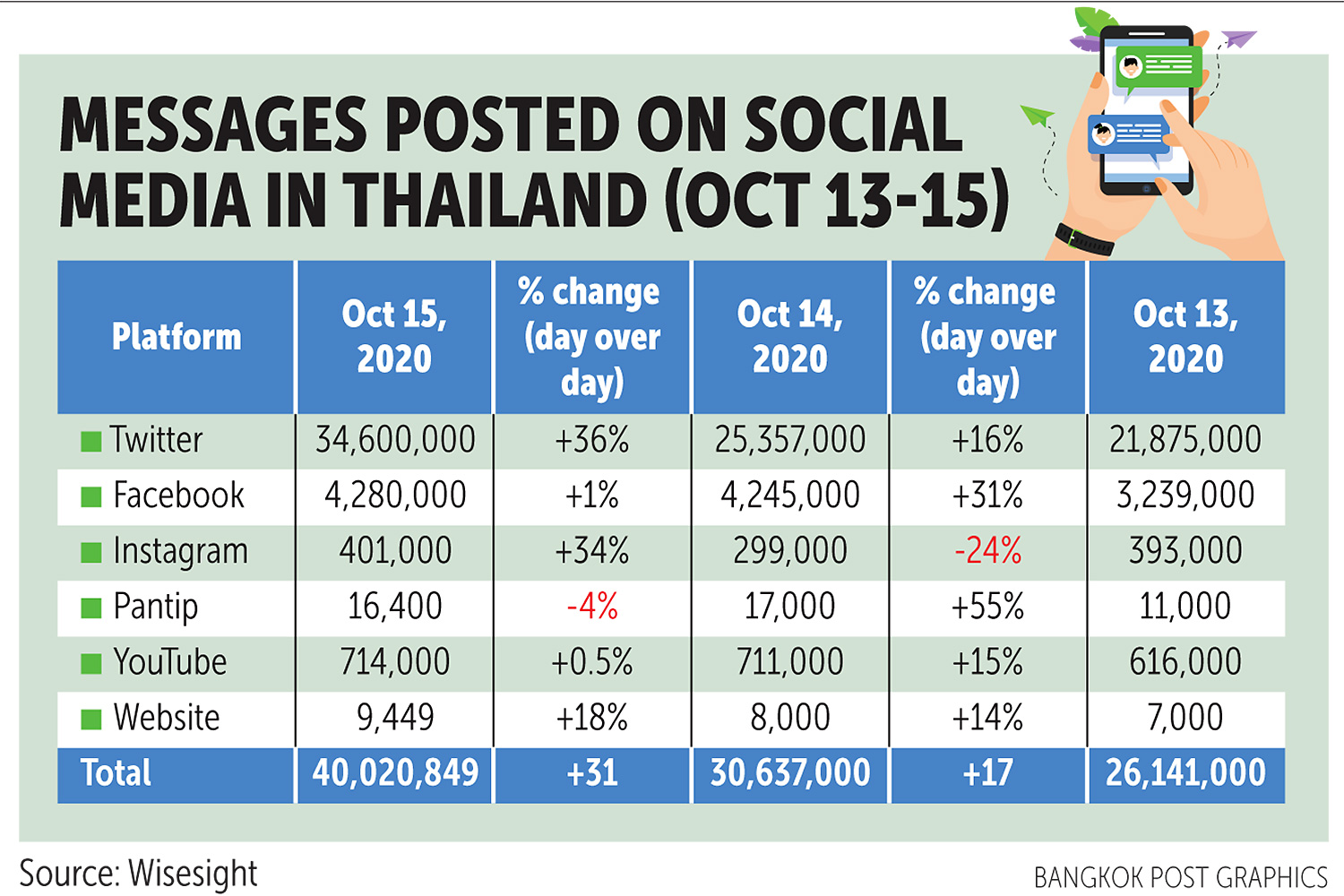Thailand: Social media gets bounce from protests
Fresh political tensions have spurred communication on social media, with posts shooting up almost 100% from normal days to 40 million on Thursday, says social media analytics firm Wisesight.
Brands have begun to hold back on digital media spending in the fourth quarter as political messages flood online platforms, drawing attention away from commercial activity.
“Some 40 million messages were posted on social media in Thailand on Oct 15, mainly driven by political strife,” said Kla Tangsuwan, chief executive of Wisesight.
The volume of posts on Oct 15 was nearly 100% above the average of 20-22 million a day, he said. This was a 31% rise from Oct 14.
According to Mr Kla, users need to consume content from various platforms and trusted sources because staying tuned to only one media channel could restrict them to one-sided information and make them vulnerable to manipulation.
Pawat Ruangdejworachai, business director of Media Intelligence (MI), a media planning and research firm, said brands have paused digital media spending after the political conflict escalated since Wednesday.
“They lack confidence and are hard to gain attraction from audiences that have more interest in political movements,” Mr Pawat said.
Normally, digital media spending spikes in the last quarter due to the festive season. Many had hoped that consumer sentiment would rebound from the pandemic starting in October, but the fresh political protests have caused brands to “pause or wait and see” to carry out marketing activities.
Social media engagement has escalated, particularly on Twitter with mostly political content under discussion, Mr Pawat said. Brands that pay for their placement on Twitter, through promoted tweets, risk being overshadowed by political messages that flood the platform, he said.
“There has been an increase in messages posted on social media channels during political demonstrations since social media users monitor what happens and use online channels to communicate with others,” he said.
According to Mr Pawat, Thailand’s social media landscape has entered a new normal in which usage is driven mainly by Generations Y and Z, who are digital natives.
Over the past couple of days, even without major leaders in the political rallies, protesters still showed up in large numbers, particularly youngsters.
“They communicate with each other and they can influence others in the digital world,” Mr Pawat said.
In the past, the arrests of iconic leaders at political rallies were meant to reduce the number of demonstrators, but this is not the case now, he said.
Some political parties, such as the Move Forward Party, have gained popularity quickly through the use of social media to draw supporters, Mr Pawat said.
Gen Y and Z are the key users of Twitter and TikTok in Thailand.
TikTok has 12 million active users on its platform in the country, up from 8 million last year, partly due to more online engagement in the wake of the pandemic.
Twitter had 11 million users last year with an explosive growth of user numbers in Thailand, particularly via political engagement from youngsters.
According to MI, media spending is expected to fall 20% to 71.2 billion baht this year, with internet channels forecast to be the only media seeing growth this year of 0.5% to 19.7 billion baht.
The estimate hinges on three assumptions: no serious viral outbreaks overseas, no second wave in Thailand and no political chaos.
Source: https://www.bangkokpost.com/business/2003527/social-media-gets-bounce-from-protests


 English
English




